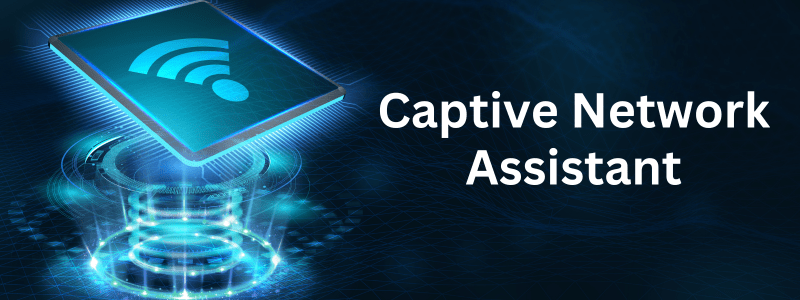
Ever found yourself at a café, connecting to the Wi-Fi, only to be greeted by a login page? That’s the magic of a Captive Network Assistant at work! These nifty tools are game-changers for network security and performance. But what exactly are they, and how can they benefit you? Let’s dive in and uncover the secrets of Captive Network Assistants.
Understanding Captive Network Assistant
Definition and Functionality
A Captive Network Assistant (CNA) is a security and management tool designed to control access to a network. When users attempt to connect, they’re redirected to a captive portal, a web page that requires authentication before granting access. Think of it as a friendly bouncer at the club, ensuring only the right people get in.
Common Uses in Various Settings
CNAs are everywhere—cafés, hotels, airports, and even schools. They provide a secure gateway, preventing unauthorized access and ensuring that the network remains safe and efficient. Whether you’re offering free Wi-Fi to customers or managing a large corporate network, CNAs are your go-to solution.
Benefits of Using Captive Network Assistant
Enhanced Security
Security is a big deal, especially with cyber threats lurking around every corner. CNAs add an extra layer of protection, ensuring only authenticated users can access the network. This keeps hackers and unauthorized users at bay.
Improved Network Performance
By managing and controlling access, CNAs help prevent network congestion. They can prioritize traffic, ensuring essential services get the bandwidth they need. Say goodbye to lag during your important Zoom call!
User Experience and Accessibility
With CNAs, users get a smooth, hassle-free connection experience. The captive portal can be customized with your branding, making it a seamless part of your user journey.
How Captive Network Assistants Work
Captive Portals Explained
When you connect to a network with a CNA, your device is redirected to a captive portal. Here, you might enter login credentials, accept terms of service, or watch a short ad. This step ensures the network knows who you are before letting you in.
Authentication Processes
Authentication can vary—some networks use simple password entry, while others might require social media logins or SMS verification. Multi-factor authentication adds an extra layer of security, ensuring it’s really you trying to connect.
Traffic Management
Once authenticated, the CNA monitors and manages network traffic. It can allocate bandwidth, prioritize critical services, and even throttle speeds for certain users to ensure fair usage.
Types of Captive Network Assistants
Software-Based Solutions
Software CNAs are installed on existing network infrastructure. They’re flexible and can be customized to meet specific needs, making them a popular choice for businesses of all sizes.
Hardware-Based Solutions
These CNAs come as dedicated devices integrated into your network. They’re robust and offer high performance, ideal for environments with heavy traffic.
Cloud-Based Solutions
Cloud CNAs are hosted offsite and managed remotely. They offer scalability and ease of management, perfect for businesses looking for a hands-off approach.
Implementing a Captive Network Assistant
Planning Your Network Security Strategy
Start by assessing your current network setup and security needs. Identify potential vulnerabilities and decide how a CNA can address them.
Choosing the Right Solution
Consider your network size, budget, and specific requirements. Whether you opt for software, hardware, or cloud-based solutions, make sure it aligns with your goals.
Installation and Configuration Tips
Follow the manufacturer’s guidelines for installation. Regularly update and configure your CNA to adapt to changing security threats and network demands.
Best Practices for Network Security
Regular Updates and Patching
Keep your CNA software and hardware up-to-date to protect against new vulnerabilities. Regular patches are crucial for maintaining security.
Strong Authentication Methods
Implement robust authentication processes, such as two-factor authentication (2FA) and strong password policies. This prevents unauthorized access and enhances security.
Monitoring and Auditing
Regularly monitor network activity and conduct security audits. This helps identify and address potential issues before they become major problems.
Optimizing Network Performance with Captive Network Assistants
Bandwidth Management
CNAs can allocate bandwidth based on user needs. Prioritize essential services and manage heavy traffic to prevent network slowdowns.
Load Balancing
Distribute network load evenly across multiple servers or access points. This prevents any single point from becoming overwhelmed, ensuring smooth performance.
Reducing Latency
Optimize network settings to reduce latency. This ensures quicker response times and a better user experience, especially for real-time applications like video calls and gaming.
Case Studies:
Business Implementation
A large retail chain implemented a CNA to manage its guest Wi-Fi. The result? Enhanced security, better customer satisfaction, and valuable insights into customer behavior.
Educational Institutions
Schools and universities use CNAs to secure their networks, ensuring only students and staff can access resources. This keeps the learning environment safe and efficient.
Public Wi-Fi Networks
Cities and municipalities deploy CNAs to offer secure public Wi-Fi. Residents and visitors enjoy reliable internet access, while the city maintains control over network security.
Challenges and Solutions
Common Issues Faced
CNAs are not without their challenges. Common issues include device compatibility, user resistance to login processes, and potential slowdowns during peak usage.
Overcoming Security Threats
Stay ahead of security threats by regularly updating your CNA and employing advanced threat detection methods. Educate users on best practices for staying safe online.
Ensuring Seamless User Experience
Optimize the captive portal for a smooth user experience. Ensure quick authentication processes and minimal disruptions to keep users happy.
Future Trends in Captive Network Assistants

AI and Machine Learning Integration
Future CNAs will leverage AI and machine learning to predict and respond to threats in real-time. This will enhance security and efficiency, making networks smarter and more resilient.
Advanced Threat Detection
Advanced algorithms will identify unusual patterns and potential threats faster than ever, providing an additional layer of protection.
IoT Compatibility
As the Internet of Things (IoT) grows, CNAs will evolve to manage and secure the myriad of connected devices, ensuring they don’t become entry points for attacks.
Conclusion
Captive Network Assistants are essential tools for securing and optimizing your network. From enhanced security to improved performance and user experience, they offer a range of benefits that make them indispensable in today’s connected world. By understanding how they work, implementing best practices, and staying ahead of future trends, you can ensure your network remains safe, efficient, and ready for the challenges of tomorrow.
FAQs
1. What is a Captive Network Assistant?
A Captive Network Assistant (CNA) is a tool that controls access to a network through a captive portal, enhancing security and managing traffic.
2. How does a Captive Network Assistant enhance security?
CNAs require user authentication before granting network access, preventing unauthorized use and protecting against cyber threats.
3. Can Captive Network Assistants improve network speed?
Yes, by managing bandwidth and prioritizing traffic, CNAs can optimize network performance and reduce congestion.
4. What are the costs associated with implementing a Captive Network Assistant?
Costs vary based on the type of CNA (software, hardware, or cloud-based) and the specific needs of your network. It’s important to assess your requirements and budget accordingly.
5. Are there any privacy concerns with Captive Network Assistants?
While CNAs enhance security, they also collect user data for authentication purposes. It’s crucial to handle this data responsibly and comply with privacy regulations.
For more insights on maintaining a secure and efficient network, check out our article on Network Security Monitoring: Protect Your Data.
